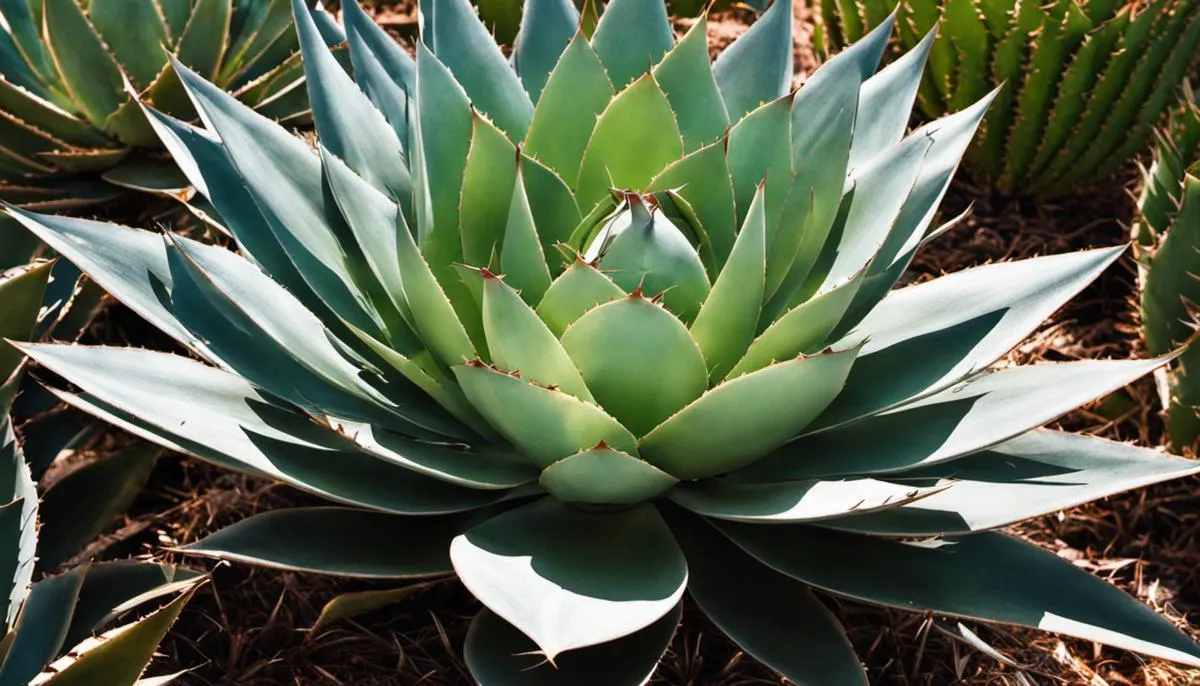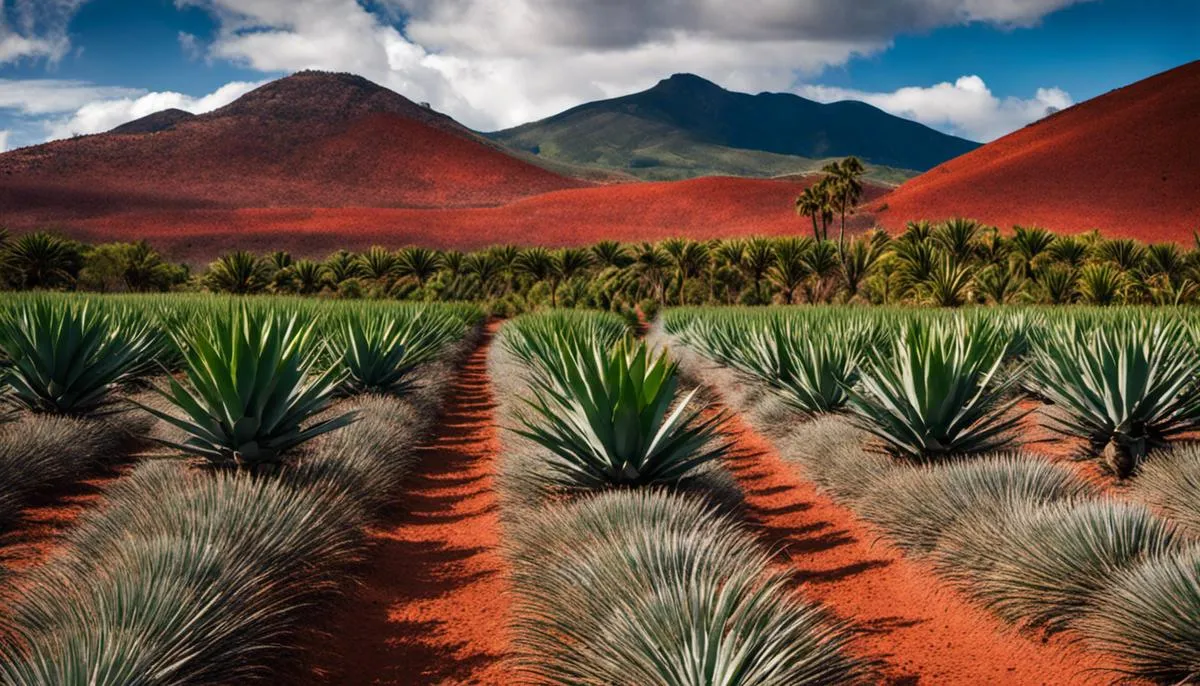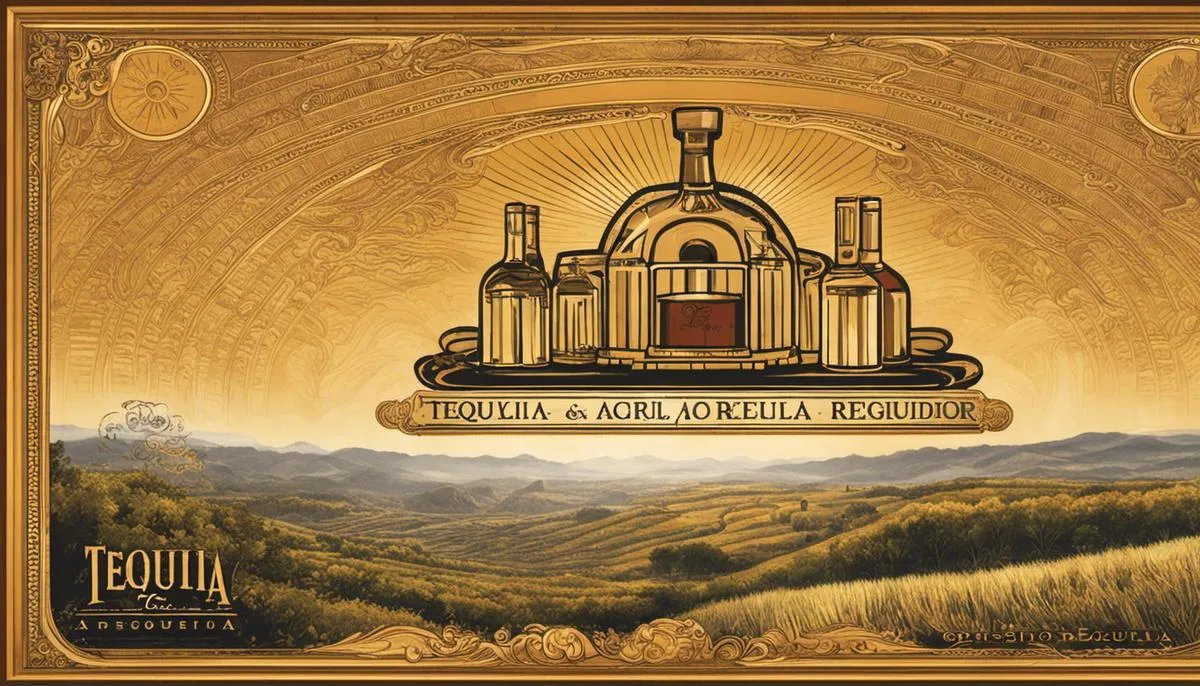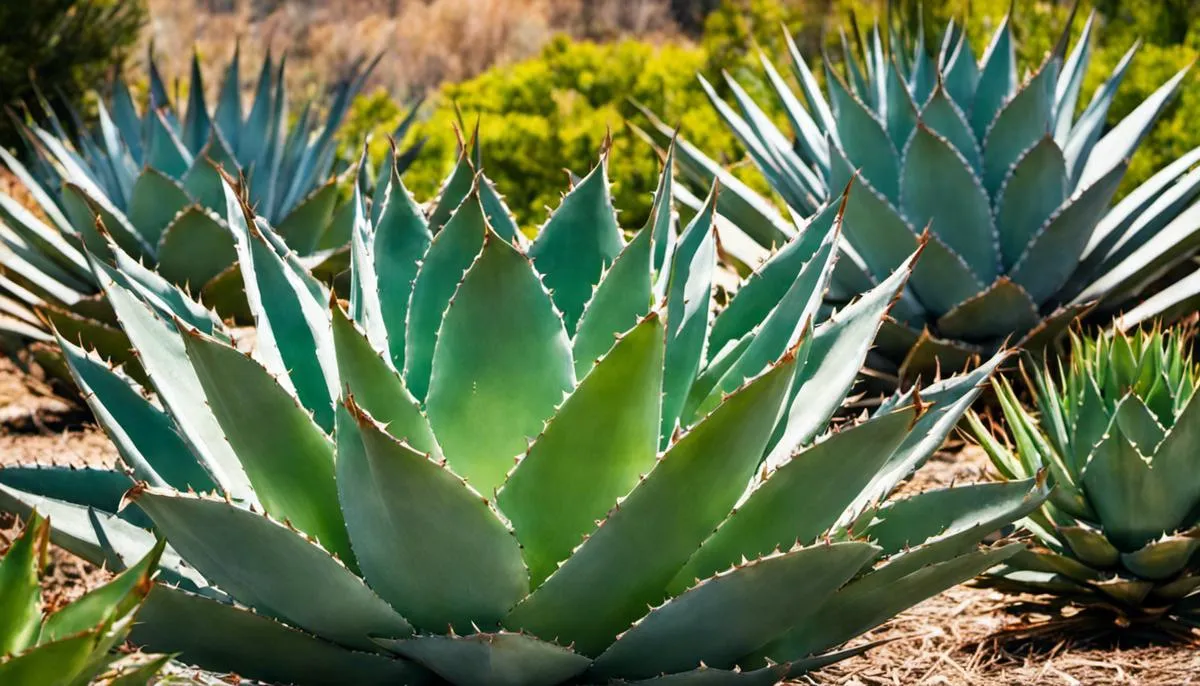Agave plants, specifically the blue agave, form the heart and soul of tequila – a popular alcoholic beverage that originates from Mexico. This insightful delve into the world of agave biology, cultivation and the intricate process of tequila production unpicks the stages involved in creating this beloved spirit. Beginning with an examination of the agave plant species and their cultivation, moving on to expose the step-by-step procedure in tequila production and finally, exploring the regulatory frameworks safeguarding its quality – this comprehensive exploration unpacks the intriguing journey from agave field to tequila glass.
Agave Plants: Biology and Cultivation
Agave: A Versatile Plant
Agave is a plant that belongs to the Asparagaceae family and encompasses a variety of more than 200 different species. They are native to the Americas, especially Mexico, and prefer hot and arid climates. These perennial plants are known for their rosette formation of thick, fleshy leaves that have sharp spikes at the tips. One species in particular, the Agave tequilana Weber, more commonly known as the blue agave, is the prime ingredient in the production of the world-renowned Mexican spirit, tequila.
Blue Agave: Ideal for Tequila Production
Blue agave is the most suitable and commonly used agave species for tequila production due to its high content of fermentable sugars, mainly fructose. It’s primarily cultivated in the western Mexican states including in Jalisco, Nayarit, Guanajuato, Michoacán, and Tamaulipas. The Jalisco region, with its rich volcanic soil and specific climate conditions, grands it a unique status in tequila production.
Cultivating Agave: Patience is Key
The cultivation of agave is a long-term process as the plant has a slow growth cycle. It typically takes between 8 to 10 years for blue agave to mature before it’s ready to harvest. Once matured, the rosette of leaves gets removed, leaving the core or “piña” which resembles a large pineapple, that is then processed for tequila production. Harvesting is typically done by skilled farmers named ‘Jimadores’.
Environmental Impacts and Sustainability
The impacts of agave cultivation on the environment are multi-faceted. On one hand, agave plantations have been noted to improve soil quality and reduce erosion in arid and semi-arid regions due to their extensive root networks, which can prevent soil from being washed away during heavy rainfall. Additionally, agave plants are adapted for water conservation and can tolerate drought conditions, making them suitable for sustainable cultivation in regions affected by water scarcity.
On the other hand, extensive agave monoculture for tequila production could potentially have negative environmental implications including loss of biodiversity, degradation of soil health and increased vulnerability to pests and diseases. Efforts towards sustainable farming practices such as crop rotation, organic farming, and fair trade are therefore crucial.
Biodiversity and Variation
In terms of biodiversity, while blue agave is the sole species used in traditional tequila production, other agave species like Agave angustifolia and Agave salmiana are used for making other Mexican spirits like mezcal. This opens up avenues for exploring different cultivation techniques and adds variety to Mexico’s spirit production industries.
About Tequila and Its Production
Originating in Mexico near the city of Tequila, this popular distilled drink is primarily produced from the Blue Agave plant, also scientifically known as Agave tequilana. The blue agave plant flourishes in the red volcanic soils around the city. Once these plants, which can weigh between 40 to 90 pounds, mature anytime from 8 to 12 years, they are harvested by professionals called jimadores. Using a razor sharp tool, a coa, the jimadores cut off the agave plant’s long, spiky leaves to extract the core, called the piña.
The harvested piñas are then baked in either stone or brick ovens, or autoclaves, which begins the transformation process of the plant’s carbohydrates into fermentable sugars. The piñas, now split into halves or quarters and properly baked for 36 to 48 hours, are crushed to extract the juice or ‘aguamiel’. This juice is put through the process of fermentation, with yeast added, over several days, turning the sugars into alcohol and creating a fermented agave juice with an alcohol content of about 5-7%.
Once fermented, the mixture undergoes a double distillation process, first resulting in a liquid called ordinario with about 20% alcohol content, and on a second run, boosts the alcohol level to about 55-60%. The extracted spirit is either immediately bottled or aged in oak barrels for further development of flavors. Depending on the period of aging, the tequila classified into silver tequila, reposado, añejo, or extra añejo.

The Process of Tequila Production
About Agave and Tequila: An Insight
Tequila, a famous distilled beverage loved worldwide, is chiefly produced in the city of Tequila, Mexico. The primary ingredient being the Blue Agave plant, scientifically known as Agave tequilana, which finds a perfect habitat in the red volcanic soils surrounding the city.
It all starts with cultivating and harvesting the agave plant. This species needs anywhere between 8 to 12 years to mature sufficiently for harvest. Specialists called jimadores expertly trim the long, thorny leaves of the plant using a razor-sharp tool, the coa, to obtain the plant’s heart or ‘piña’. These piñas are similar in appearance to a large pineapple, with each weighing an impressive 40 to 90 pounds!
Once harvested, these piñas are chopped into halves or quarters and steam-cooked in large ovens, or hornos, for nearly 36 to 48 hours. This step is significant for the transformation of agave’s complex fructans into simpler, fermentable sugars.
Post-cooking, the softened piñas are transported to a milling area. Here, the juice, or mosto, is extracted which is then fermented in large tanks for multiple days. This fermentation converts the sugars into alcohol, yielding a fermented agave juice with an alcohol volume of about 5-7%.
The fermentation is followed by double-distillation in copper pot stills. The first distillation output, known as the “first run,” generates a liquid called ordinario with about 20% alcohol content. This is further distilled in the “second run,” increasing the alcohol content to a robust 55-60%. Post-distillation, tequila can be bottled directly as silver tequila or aged in wooden barrels to be classified as reposado, añejo, or extra añejo.
The final quality and flavor of tequila are significantly influenced by the type and maturity of the agave plant used, the cultivation region, fermentation, and aging method. Hence, strict control is exercised at each stage to ensure adherence to the finest standards of tequila manufacturing.
Although tequila’s global popularity has enhanced cultural and agricultural visibility of Mexico, it has also exerted pressure on the agave industry. The plant’s long maturity period, combined with the increasing demand of tequila, calls for a delicate balancing act to ensure supply meets demand whilst maintaining sustainability of the plant and soil.

Tequila Regulations and Types
Regulating Tequila: Mexico’s Strict Frameworks
Tequila has a designated appellation similar to Champagne or Cognac within Mexico’s regulatory frameworks. Production, branding, and marketing of tequila is governed by the Appellation of Origin Tequila (AOT), supervised by Mexico’s government via the Consejo Regulador del Tequila (CRT) or Tequila Regulatory Council.
The regulations by CRT are rigorous. For a drink to officially be called tequila, it must be produced within certain regions of Mexico, referred to as the Denomination of Origin (DO) areas. They encompass 181 municipalities in five states, including Jalisco, Nayarit, Tamaulipas, Michoacán, and Guanajuato. The production of tequila is limited to a specific type of the blue agave plant, Agave tequilana Weber Blue variety, which must be grown within these specified areas.
Agave Plants and Tequila Production
The production process of tequila begins with the planting of blue agave plants, which are covered in spiky leaves and can grow up to eight feet tall. The plants take 8 to 10 years to mature, after which they are ready to be harvested.
Harvesting involves removing the leaves to expose the “piña” or heart of the plant, which is then roasted to convert its inulin into fermentable sugars. The roasted piñas are crushed to separate the pulp from the juice – which is then fermented and distilled twice to produce tequila.
Types of Tequila
There are essentially five main categories or types of tequila, based on aging time and agave spirit concentration. These are Blanco, Joven, Reposado, Anejo, and Extra Anejo.
Blanco, or white tequila, is clear and typically unaged, which means it retains the pure flavor profile of the agave plant. It’s bottled immediately after distillation or aged less than two months in stainless steel or neutral oak barrels.
Joven, or gold tequila, is essentially Blanco tequila with additives, like caramel coloring or flavoring, to create a smooth taste. Some premium Joven tequilas are blend of Blanco and Reposado.
Reposado, or rested tequila, is aged in wood barrels (oak is most common) for anywhere from two months to less than a year. The aging process imbues the tequila with a golden color, and the taste becomes a good balance between agave and wood flavors.
Anejo, or aged tequila, is aged in barrels no larger than 600 liters for one to three years. This aging time brings a darker color and more complex flavor, with recognizable notes of the barrel’s wood.
Extra Anejo, or ultra-aged, is a relatively new category added in 2006. It signifies tequila aged longer than three years, resulting in a tequila that can rival some of the finest whiskeys and cognacs in complexity and taste.
For a tequila to be labeled as 100% agave, it must be made solely with the sugars of the blue agave plant. Otherwise, it is referred to as “mixto” and can contain up to 49% other sugars, typically cane sugar, in its composition.

After exploring the comprehensive journey of tequila production, it’s clear that the process is a meticulous craft grounded in a rich tradition of agave cultivation and distillation. Understanding the demanding growth cycle of the agave plant, the intricate steps involved in transforming this succulent into a premium spirit, and the stringent regulations assuring the quality of each tequila type, allows for a deeper appreciation of every sip. Therefore, when next you raise a glass of this awe-inspiring liquor, remember the remarkable transformation from the humble blue agave plant to the refined, distinctive taste of one of Mexico’s finest exports.


